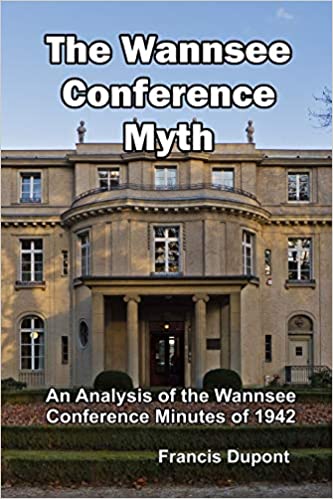Books Available to Read or Download
Books Available to Read or Download
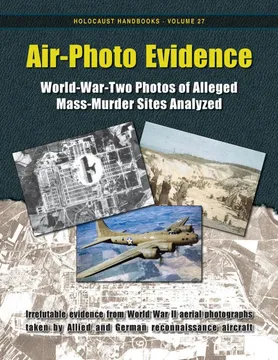
Air Photo Evidence: World War II Photos of Alleged Mass Murder Sites Analyzed
edited by Germar Rudolf (6th Ed. 2020)
The present book is full of air photo reproductions and schematic drawings which, according to the author, refute many of the atrocity claims made by witnesses in connection with events in the German sphere of influence.
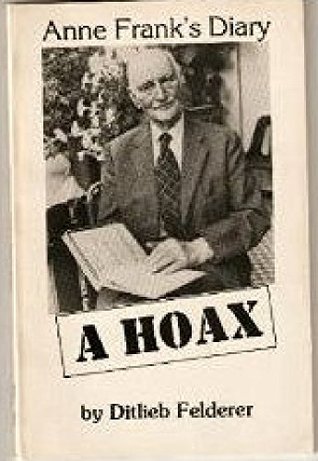
by Ditlieb Felderer (1979)
It is with mixed feelings that we present here the first real expose ever undertaken on The Diary of Anne Frank. From having been positive to the diary, our standpoint gradually changed to the negative until we finally had to dismiss the whole thing as a forgery. This study gives our reasons for believing so.
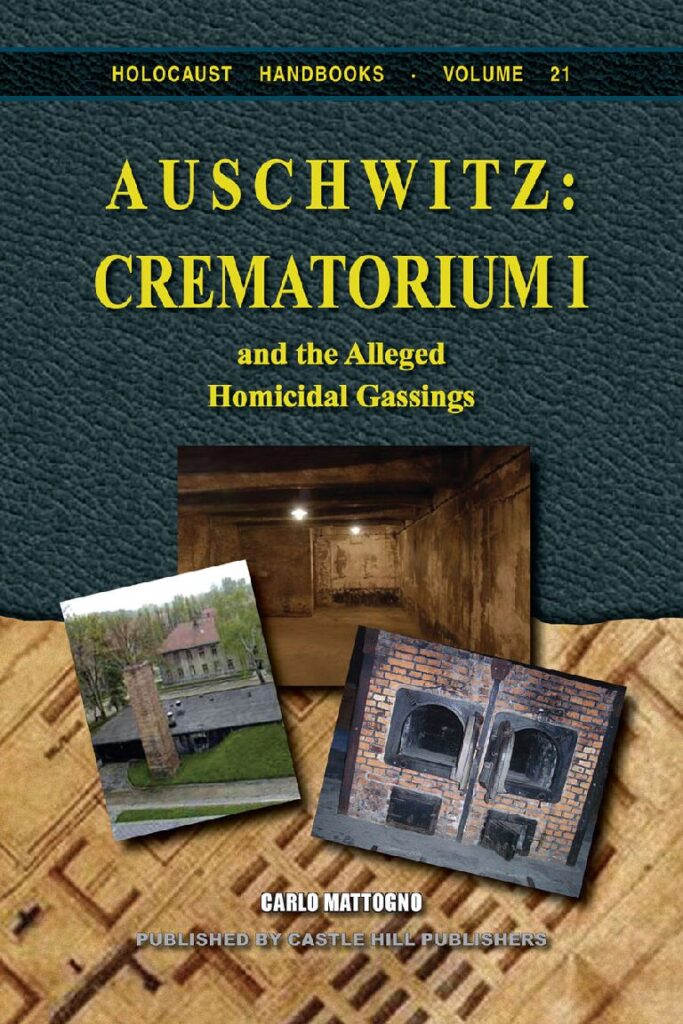
Auschwitz: Crematorium 1 and the Alleged Homicidal Gassings
by Carlo Mattogno (2nd Ed. 2016)
Mattogno shows with forensic methods – by investigating the current state of this morgue as presented to tourists today — that this crematory’s morgue has never been anything different than what it was meant to be: a morgue.
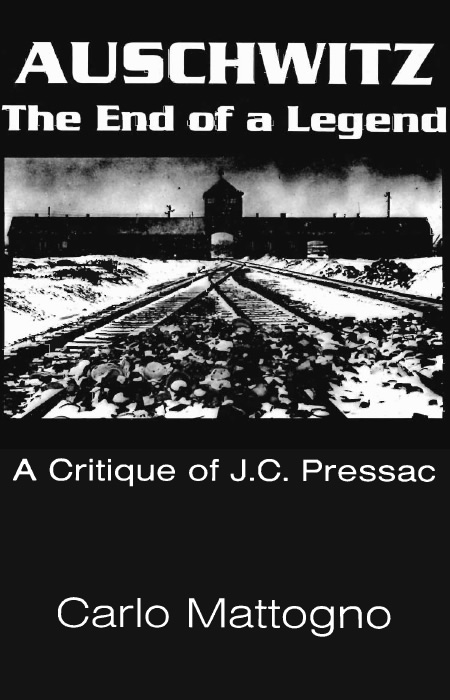
Auschwitz: The End of a Legend
by Carlo Mattagno (1994)
The book shows how unjustified Jean-Claude Pressac is in reviving once more the old legend that there really were gas chambers used for the mass annihilation of millions of Jews at Auschwitz. It also shows how Pressac has misinterpreted his data, which thereby demonstrates his ignorance of the structure and functioning of both crematory ovens and gas chambers, and of the nature and use of the disinfectant Zyklon B.
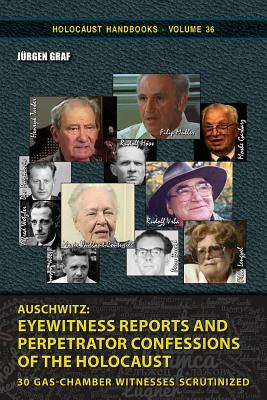
Auschwitz: Eyewitness Reports and Perpetrator Confessions of the Holocaust
by Jürgen Graf (2019)
This present study applies critical analysis of the evidence to 30 of the best-known or most important witnesses about Auschwitz, including putative former inmates Elie Wiesel, Rudolf Vrba, and Miklós Nyiszli.
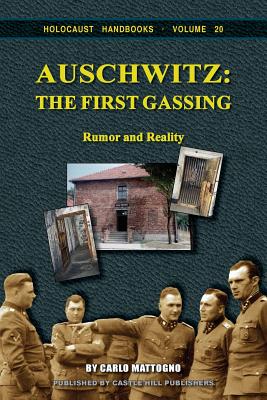
Auschwitz: The First Gassing – Rumor and Reality
by Carlo Mattogno (3rd Ed. 2016)
It is evident that those giving the accounts of the first gassing at Auschwitz were either not there, lying or mistaken—and Mattogno exposes their obvious fabrications.
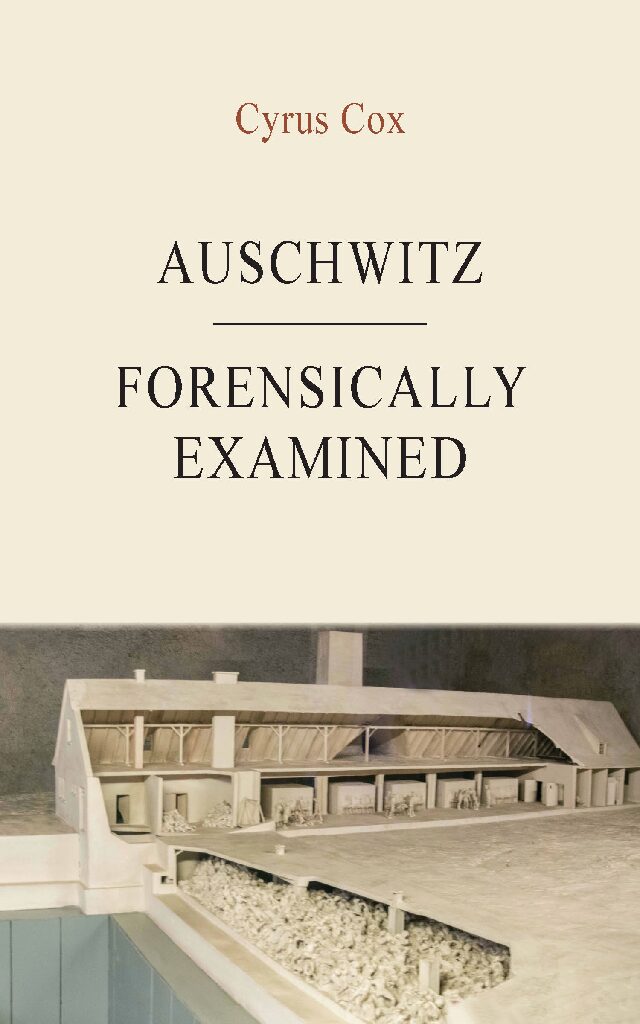
Auschwitz: Forensically Examined
by Cyrus Cox (2019)
Provides an excellent introduction to the forensic evidence proving that Auschwitz/Birkenau was not an extermination camp.
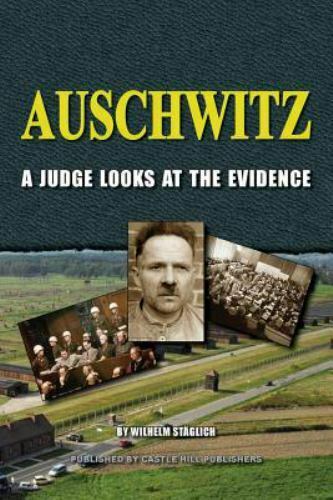
Auschwitz: A Judge Looks at the Evidence
by Wilhelm Stäglich (2015)
An analysis of the Auschwitz narrative, which confronts the reader with the scandalous way in which judicial authorities bent and broke the law in order to come to politically foregone conclusions.
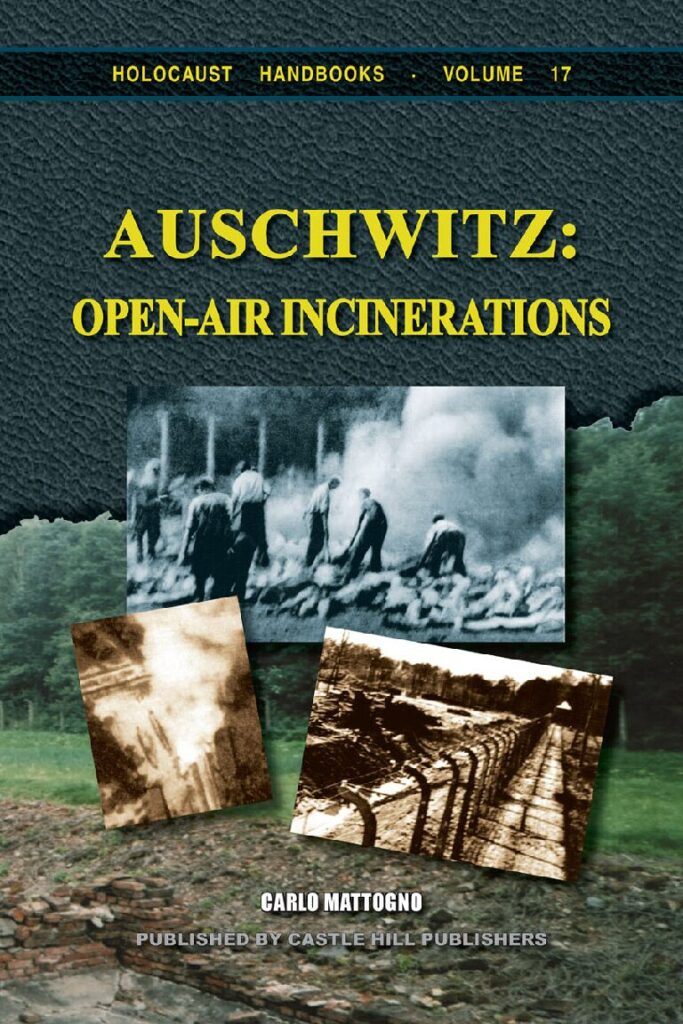
Auschwitz: Open-Air Incinerations
by Carlo Mattogno (2nd Ed. 2016)
This study investigates all available documentary, physical, and anecdotal evidence to show that no traces of huge pyres or massive smoke covering the camp can be seen in the spring and summer of 1944, thereby contradicting witness statements to the contrary.

Thies Christophersen (1975)
“During all the time I was in Auschwitz I never in the least observed anything that even indicated mass killings in gas chambers.” So goes the testimony of the German eyewitness Thies Christophersen. The reading public has the right to read this eyewitness report from Auschwitz and see the photographs taken by the author whilst in the camp.
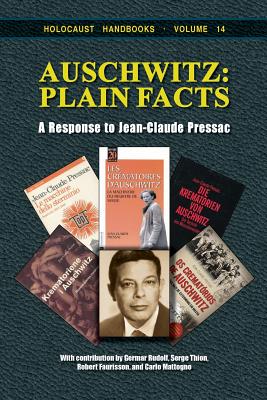
Auschwitz: Plain Facts – A Response to Jean Claude Pressac
Edited by Germar Rudolf (2nd Ed. 2016)
The works of Jean-Claude Pressac, who tried to refute revisionists with their own technical methods in two major works on Auschwitz, are subject to a detailed and devastating critique by leading revisionist scholars.
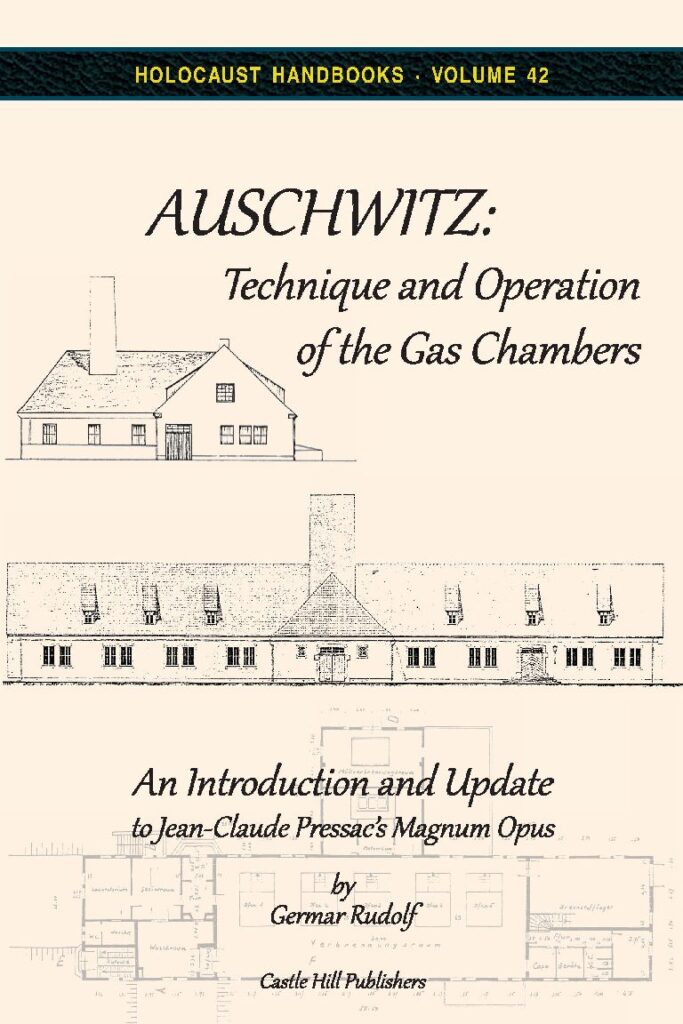
Auschwitz: Technique and Operation of the Gas Chambers
by Germar Rudolf (2019)
The present book gives an overview of previously classified material made accessible and analyzed since Pressac published his 1989 book, bringing the reader up to speed with the current knowledge on document research into Auschwitz.
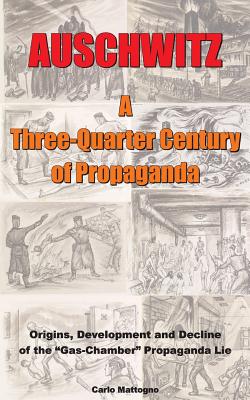
Auschwitz: A Three-Quarter Century of Propaganda
by Carlo Mattogno (2017)
Origins, development, and decline of the ‘gas-chamber’ propaganda lie.
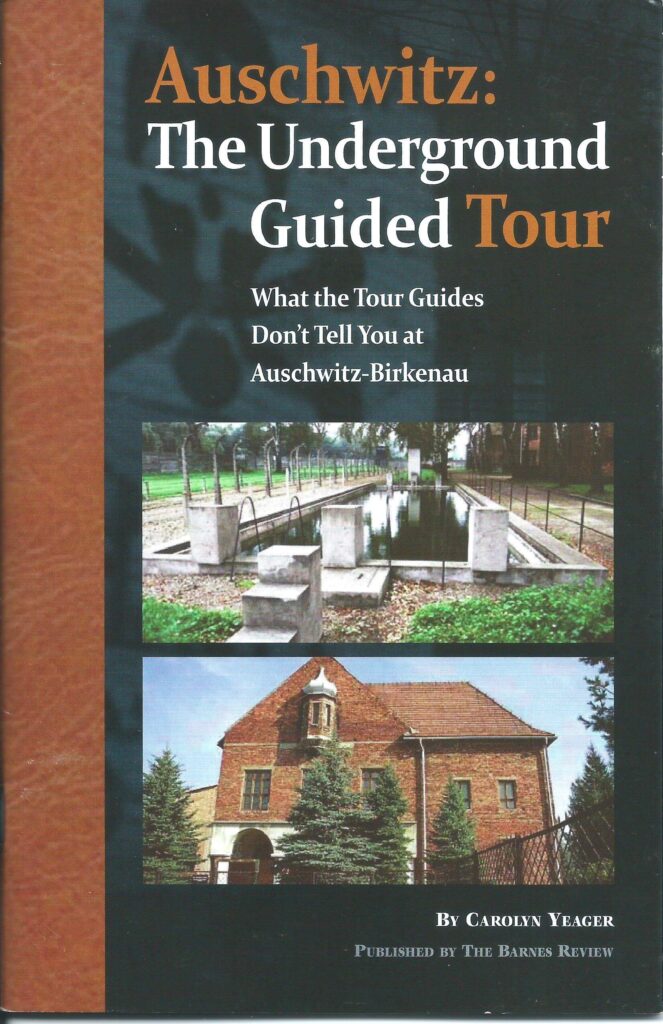
Auschwitz: The Underground Guided Tour
by Carolyn Yeager (2010)
A cautiously written work that moves toward a surprising conclusion, leaving us pondering how so much that is not true has seeped into our consciousness as “fact.”
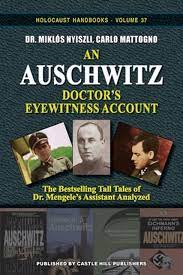
by Carlo Mattogno (2018)
The various writings of Hungarian Jew Miklós Nyiszli, a forensic physician who claims to have been Dr. Mengele’s assistant at Auschwitz, are subjected to thorough critical scrutiny.

Auschwitz Lies: Legends, Lies & Prejudices on the Holocaust
by Rudolf, Mattogno (4th Ed. 2017)
Untruths and propaganda about Auschwitz are exposed in this book for what they are: political lies created to ostracize dissident historians and keep the Western world in Holocaust servitude.
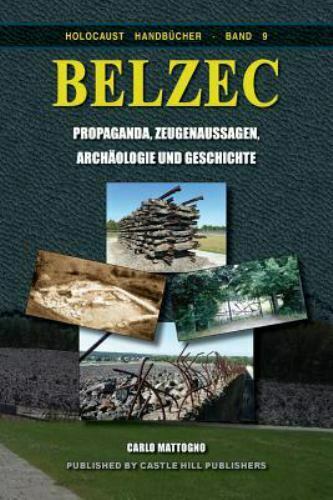
Belzec: In Propaganda, Testimonies, Archeological Research & History
by Carlo Mattogno (2004)
Forensic drillings and excavations were performed in the late 1990s, the results of which are explained and critically reviewed. These findings, together with the absurd claims by ‘witnesses’ and the available documentation about this camp, refute the thesis of an extermination camp.
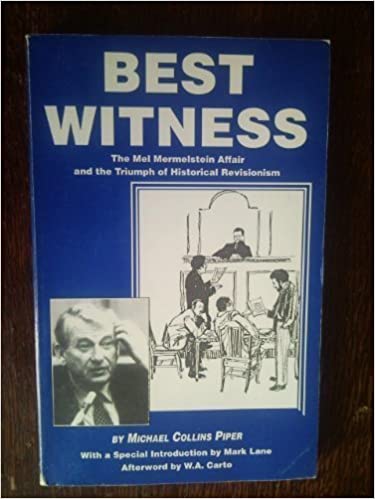
Best Witness: The Mel Mermelstein Affair and the Triumph of Historical Revisionism
Michael Collins Piper (1993)
Mel Mermelstein, the self-described “best witness” to the holocaust, with the aid of five law firms, the entire press of the world and a Jewish judge, came out a bad loser against the Institute for Historical Review and the Liberty Lobby, two institutions with no Establishment support whatsoever and the hostility of the press. The book will be a bitter pill to many who may have forgotten that in America, those who debunk sacred cows have rights as well as those who worship them.
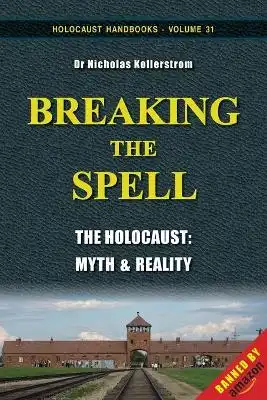
Breaking the Spell: The Holocaust – Myth & Reality
by Nicholas Kollerstrom (2014)
Dr. Nicholas Kollerstrom effectively juxtaposes the commonly accepted ideas about a Nazi extermination policy toward the Jews with a wide array of mostly unchallenged, but usually unmentioned evidence pointing in a quite different direction.
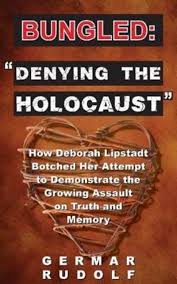
Bungled: “Denying the Holocaust”
by Germar Rudolf
Backed up with hundreds of references to thoroughly researched studies, the present book demonstrates that Dr. Lipstadt clearly has neither understood what the principles and methods of science and scholarship are, nor has she any clue about the historical topics she is writing about.

Bungled: Raul Hilberg’s Failure to Prove National Socialist Killing Centers
by Carlo Mattogno (2021)
Prof. Dr. Raul Hilberg’s The Destruction of the European Jews does a formidable job of documenting the National-Socialist persecution of Jews, but when it comes to proving that the Nazis planned and carried out a policy of systematic mass annihilation, Hilberg’s opus magnum proves highly deficient.
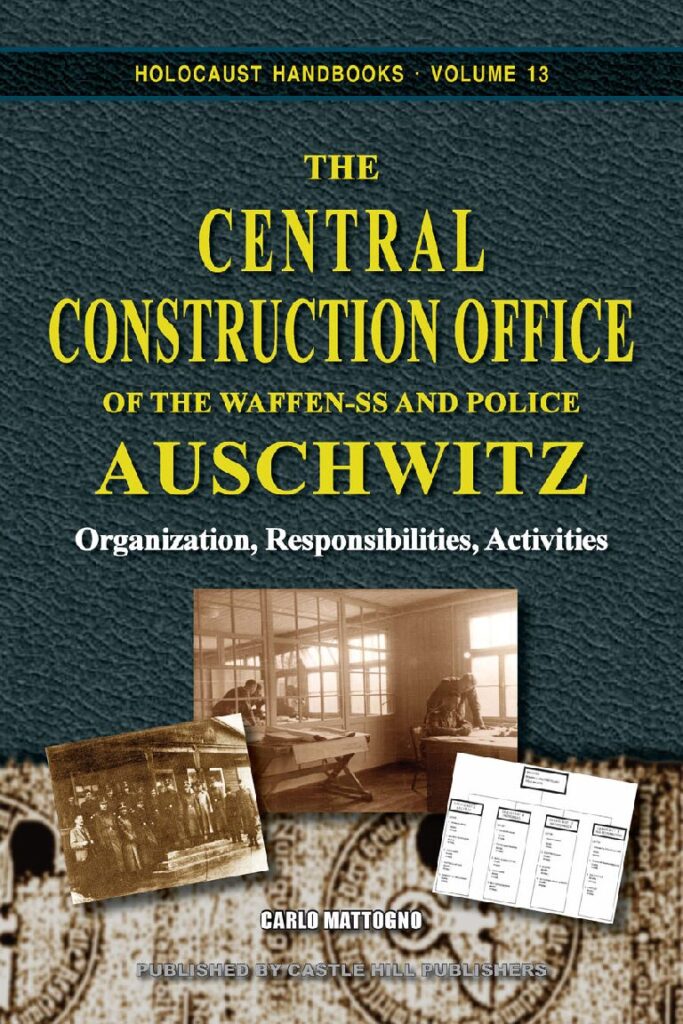
by Carlo Mattogno (2nd Ed. 2015)
Carlo Mattogno provides a deep understanding of the organization, tasks, and procedures of this very important office, which was responsible for the planning and construction of the Auschwitz-Birkenau camp complex.
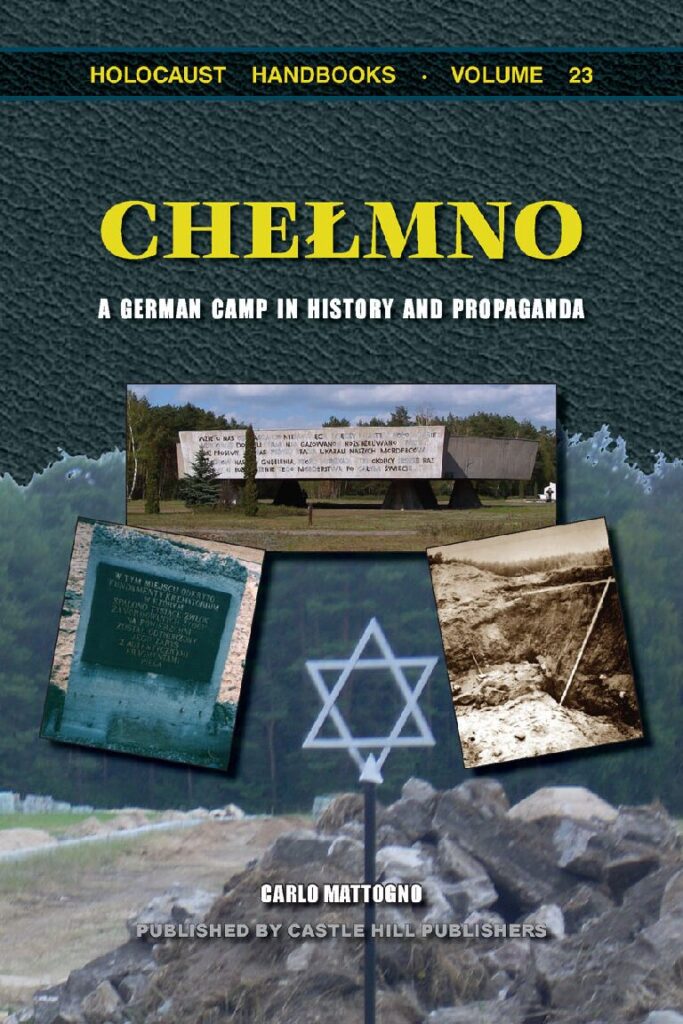
Chelmno: A German Camp in History and Propaganda
by Carlo Mattogno (2nd Ed. 2017)
This book challenges the conventional account of what went on inside Chelmno by undermining the orthodox claims about the camp with an overwhelming body of evidence.
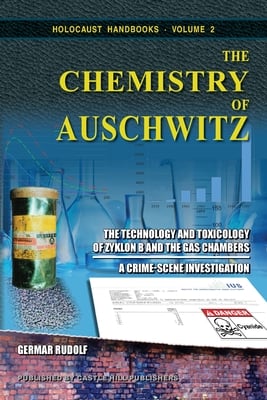
The Chemistry of Auschwitz: The Technology and Toxicology of Zyklon-B and the Gas Chambers
by Germar Rudolf (7th Ed. 2017)
A highly technical study that tries to conduct Auschwitz research on the basis on forensic science, where material traces of the crime and their interpretation reign supreme.

Commandant of Auschwitz: Rudolf Höss, His Torture and His Forced Confessions
by Carlo Mattogno (2017)
The author demonstrates that Höss’s statements after his capture about the so-called “Final Solution” contradict one another and are refuted by historical facts established by solid documentation and material evidence.
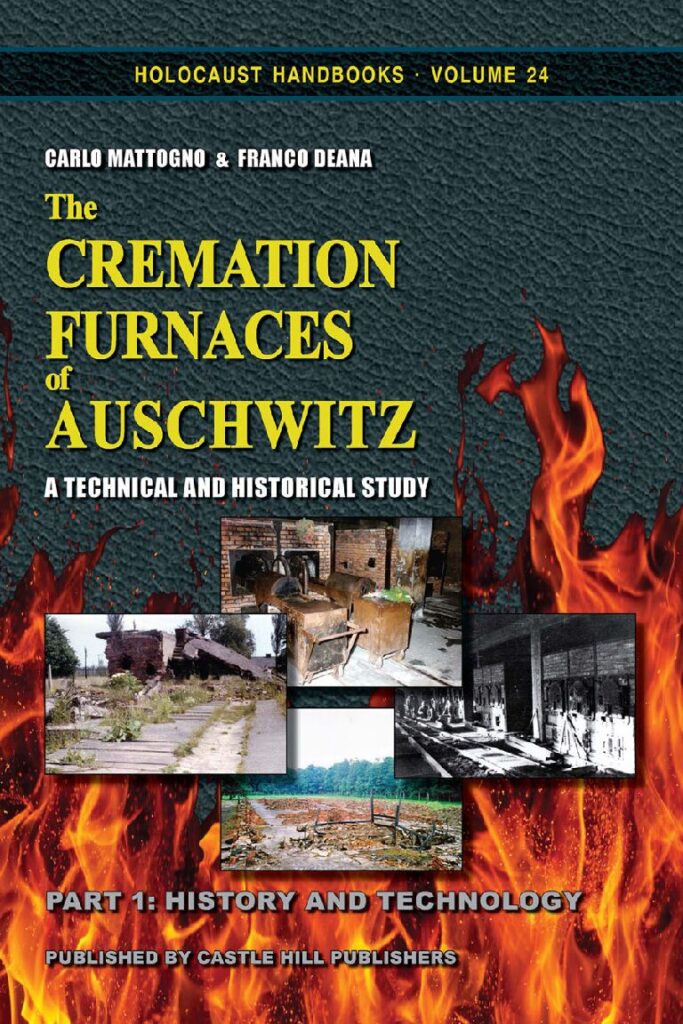
The Cremation Furnaces of Auschwitz: A Technical and Historical Study
by Carlo Mattogno (2015)
The present study investigates the Auschwitz cremation furnaces from the bottom up — Part 1: History and Technology, Part 2: Documents & Part 3: Photographs.
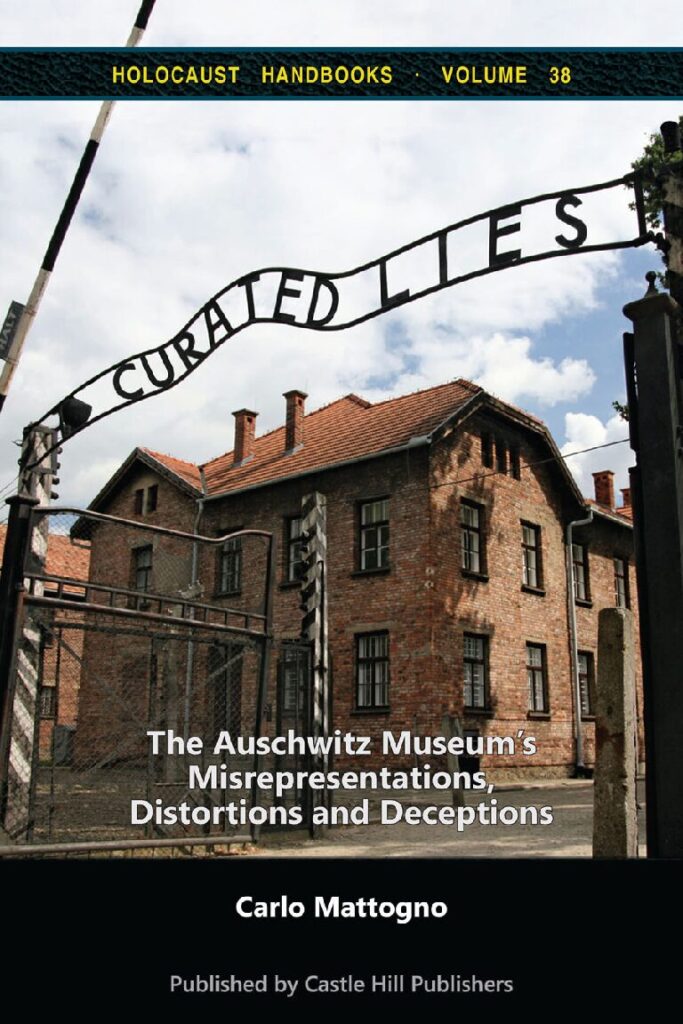
Curated Lies: The Auschwitz Museum’s Misrepresentations, Distortions, and Deceptions
by Carlo Mattogno (2016)
Exposes the many ways in which visitors have been deceived and misled by the forgeries and misrepresentations committed by the Auschwitz Museum.
See the companion video here.
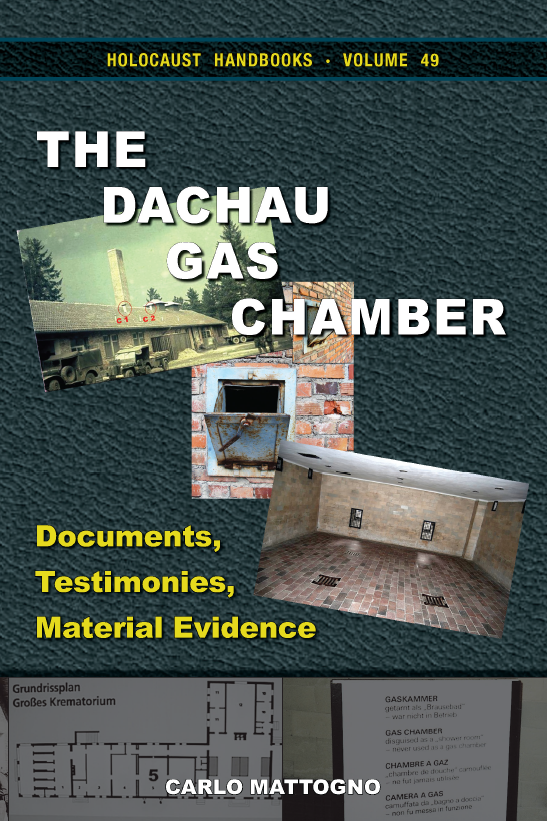
by Carlo Mattogno (2022)
Ever since the occupation of the Dachau Camp by the U.S. Army in late April 1945, the homicidal gas chamber claimed to have existed in the camp’s crematorium has been one of the hot spots of Allied atrocity propaganda, and later a mainstay of the orthodox Holocaust narratives. The accusations followed the pattern created by the Soviets after their occupation of the Majdanek and Auschwitz camps in Poland. Both the Soviets and the Americans exaggerated victim numbers and attributed features to these gas chambers which are demonstrably impossible.
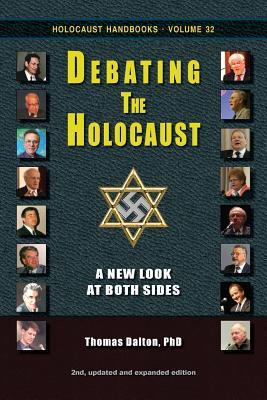
Debating the Holocaust: A New Look at Both Sides
by Thomas Dalton, PhD. (2015)
In this book, arguments and counter-arguments for both sides — the traditional and the revisionist views — are presented, and all relevant facts are laid out in a concise manner so that the reader can judge for himself.

Debunking the Bunkers of Auschwitz: Black Propaganda Versus History
by Carlo Mattogno (2nd Ed. 2016)
Mattogno has combed tens of thousands of documents from the Auschwitz Construction Office and analyzed a plethora of eyewitness statements to show how camp rumors of two alleged homicidal gas chamber buildings have their roots in two innocuous delousing facilities built in 1942 to save lives.
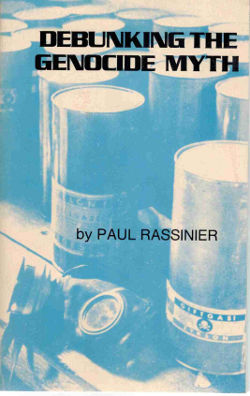
by Paul Rassinier (1978)
The author’s contentions that there was no Nazi policy of Jewish genocide, that there were no officially sanctioned “exterminations by gas” and that there were no six million Jewish deaths at the hands of the Nazis are thoroughly examined in this important work.
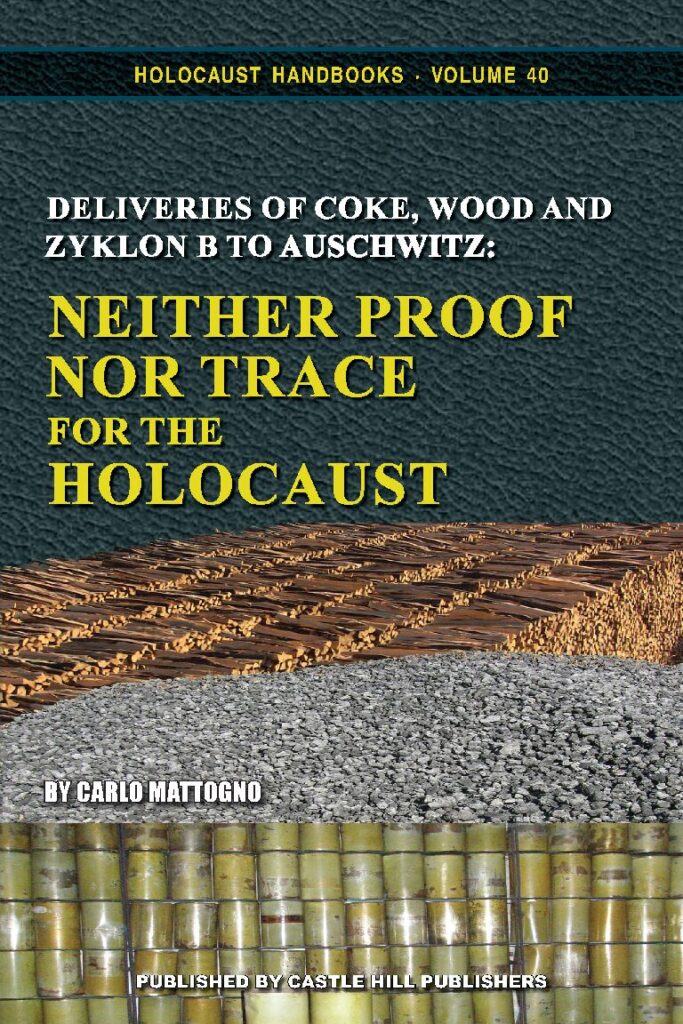
Deliveries of Coke, Wood and Zyklon-B to Auschwitz: Neither Proof nor Trace for the Holocaust
by Carlo Mattogno (2021)
As the present study shows, the documented supplies of coke, wood and Zyklon B delivered to Auschwitz actually prove that the mass-extermination and mass-cremation claims by main-stream historians cannot be true.
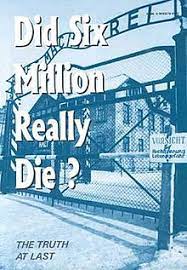
by Richard E. Harwood (2nd Ed. 1974)
The ensuing pages will reveal that the claim that no less than Six Million Jews were exterminated in National Socialist concentration camps to be the most colossal piece of fiction and the most successful of deceptions.
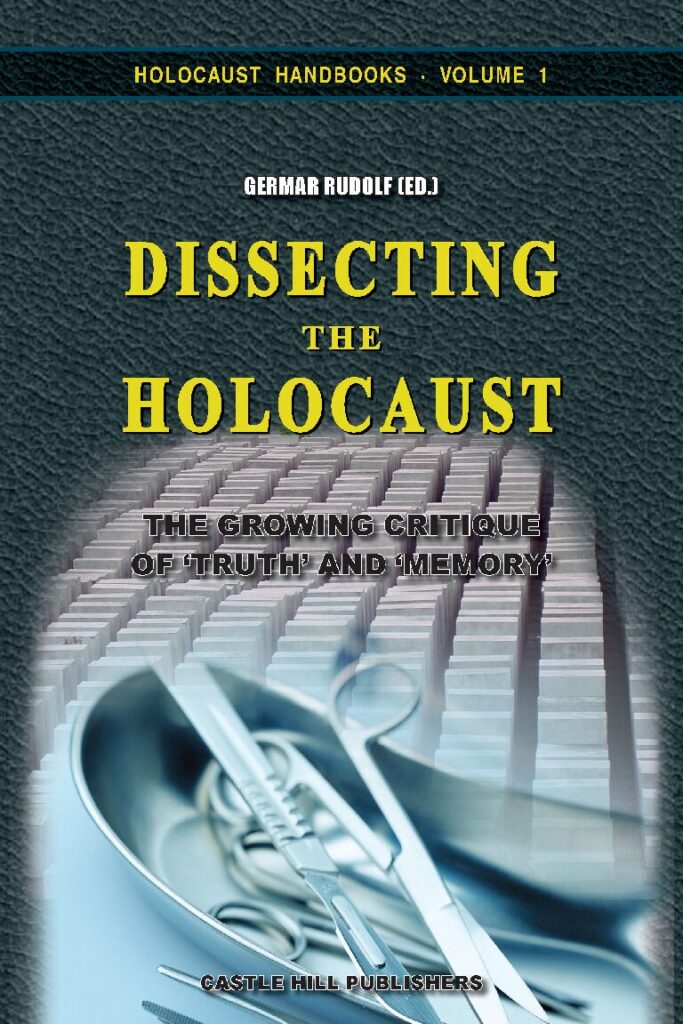
Dissecting the Holocaust: The Growing Critique of ‘Truth’ and ‘Memory’
by Germar Rudolf (3rd Ed. 2019)
More than a dozen researchers subject the ‘gas chambers,’ the ‘six million,’ the post-war trials, and other linchpins of the orthodox Holocaust narrative to careful, precise, methodical and withering analysis.
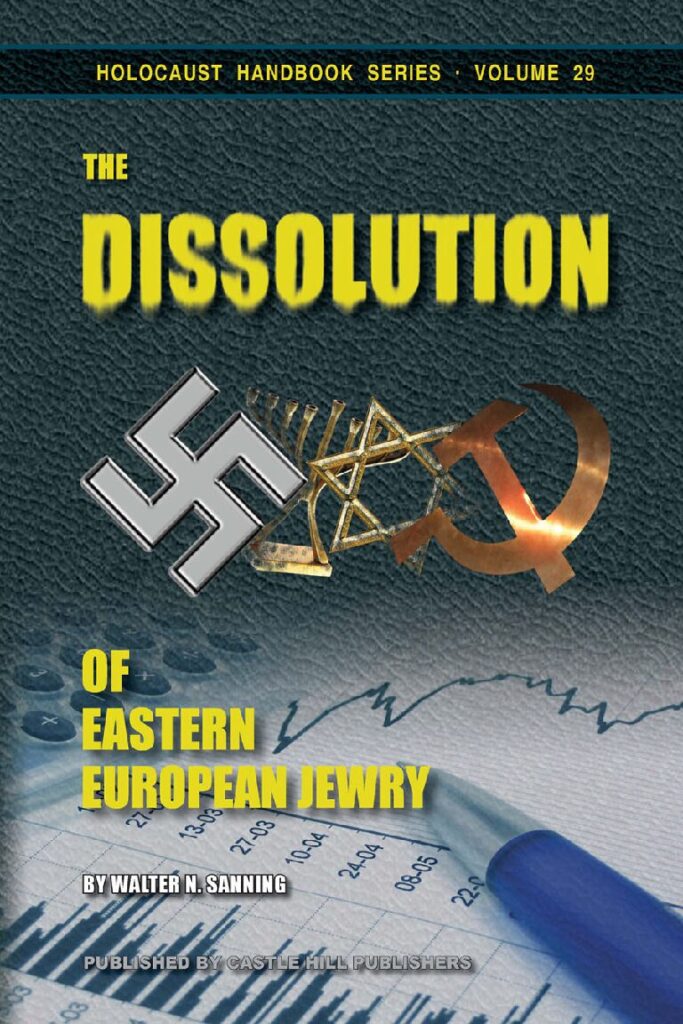
The Dissolution of Eastern European Jewry
by Walter N. Sanning (2nd Ed. 2015)
This book jumps squarely into the uninviting waters of 20th century Jewish demography and migration and attempts to reconstruct these Jewish population changes, especially in their quantitative aspects.
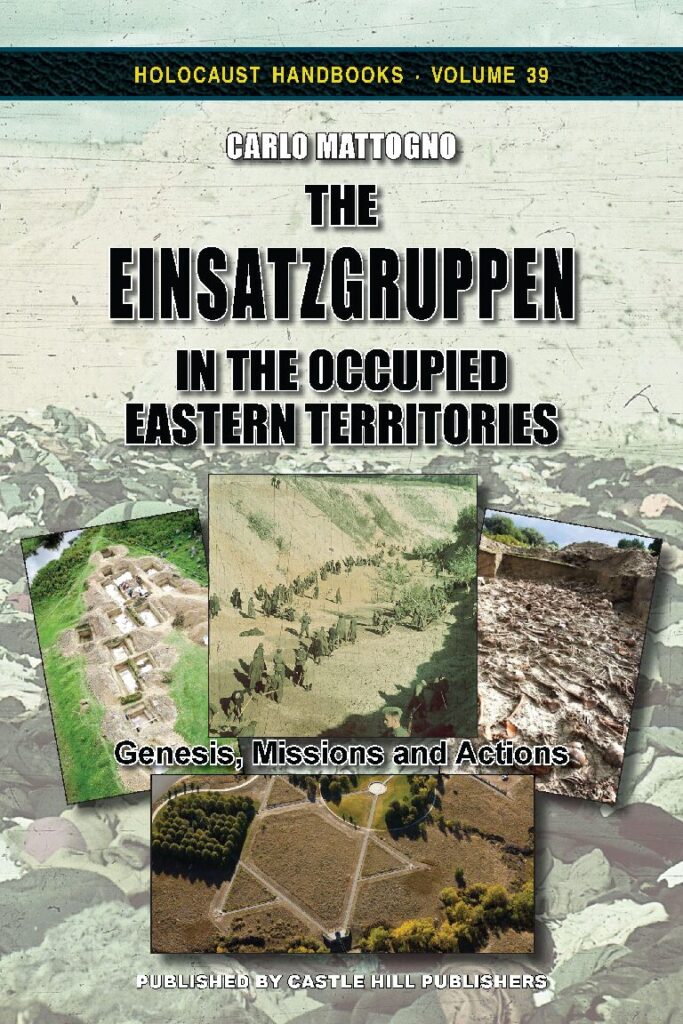
The Einsatzgruppen in the Occupied Eastern Territories
by Carlo Mattogno (2018)
This study takes a critical look at the Einsatzgruppen’s activities and missions and shows that they were not simple killing units bent on the wholesale slaughter of Jews, but necessary parts of the German war effort ordered to assist in stemming the tide of Bolshevism.
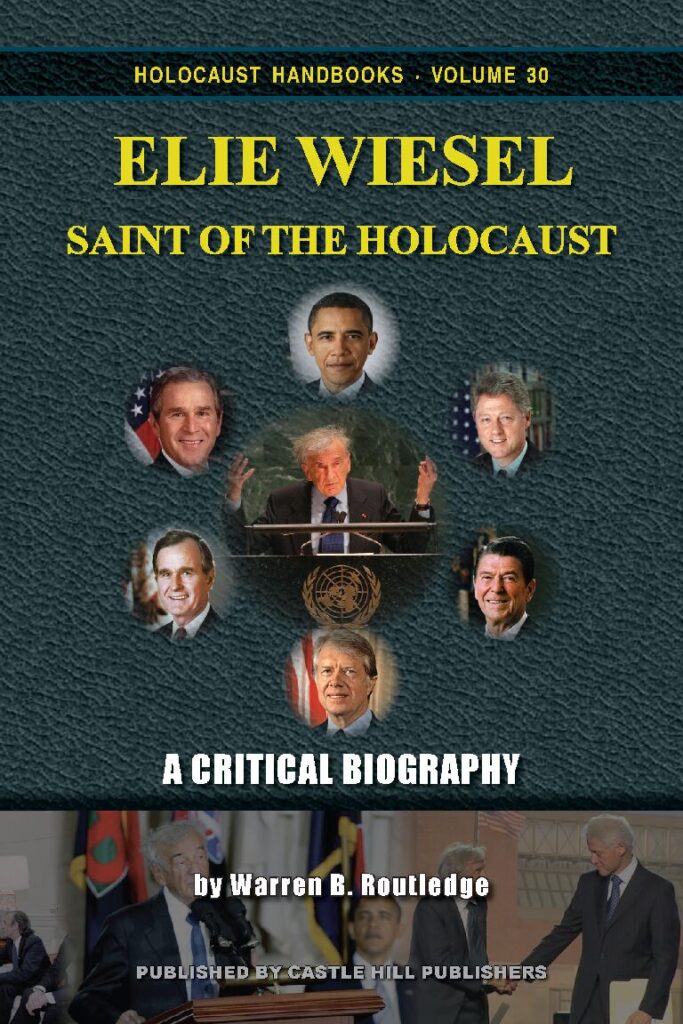
Elie Wiesel: Saint of the Holocaust: A Critical Biography
by Warren B Routledge (3rd Ed. 2020)
In these pages, both Wiesel’s personal deceits and the whole myth of “the six million” are mercilessly exposed and laid bare for the reader’s perusal.
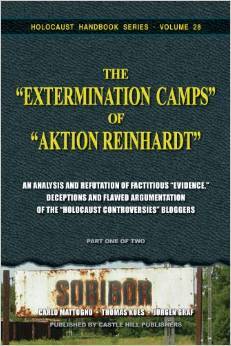
The “Extermination Camps” of “Aktion Reinhart”
by Carlo Mattogno, Thomas Kunes, & Jürgen Graf (2nd Ed. 2015)
An analysis and refutation of factitious “evidence,” deceptions and flawed documentation of the “Holocaust Controversies” bloggers.
Click here to read the 570 page Holocaust Controversies book for context.
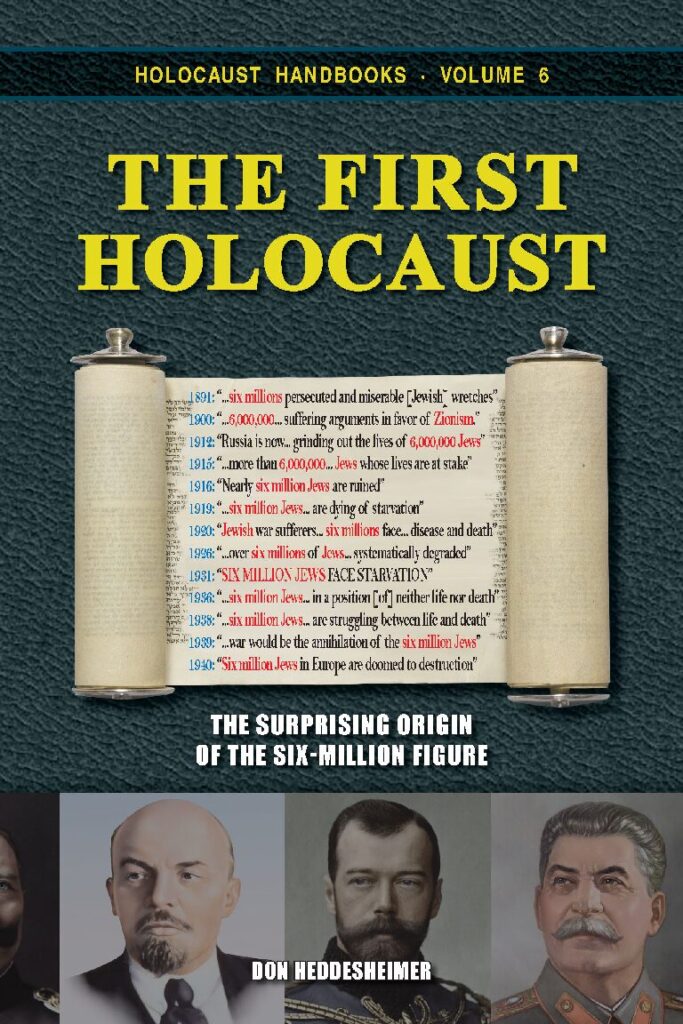
The First Holocaust: The Surprising Origin of the Six-Million Figure
by Don Heddesheimer (5th Ed. 2018)
This book reveals a Jewish-Zionist propaganda pattern that has been used since the late 1800s, first against czarist Russia, then in favor of the Soviet Revolution, next against Nazi Germany, and finally and ever since in favor of Israel.
See the companion video here.
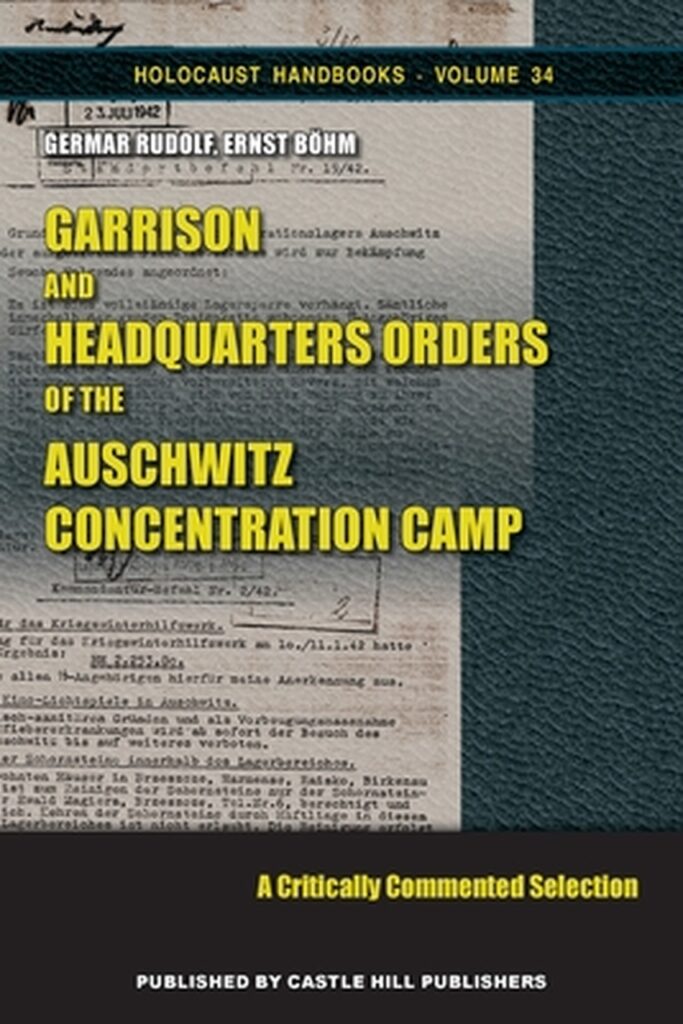
Garrison and Headquarters Orders of the Auschwitz Concentration Camp
by Germar Rudolf and Ernst Böhm (2020)
Of all the orders ever issued by the various commanders of Auschwitz, only one thing is not to be found in these orders — the slightest trace of an indication that something outrageous was going on at Auschwitz.
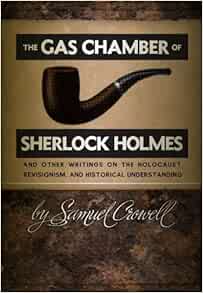
The Gas Chamber of Sherlock Holmes
by Samuel Crowell (2011)
Drawing on extensive empirical and documentary evidence as well as methods of cultural criticism conventionally eschewed by field historians, Samuel Crowell argues that the “canonical” Holocaust gassing claim can be traced to a fateful crisis of modernism — a crisis revealed in popular texts and long-forgotten cultural ephemera. Spanning from the earliest broadcast rumors to the extermination narrative that was sealed at Nuremberg, Crowell’s probing analysis permits us to consider how a grim story emerged and evolved in the cyclonic momentum of an era marked by social upheaval, total war, and unprecedented technological change.
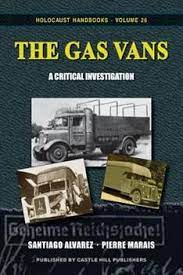
The Gas Vans: A Critical Investigation
by Santiago Alvarez (2011)
Even in orthodox historiography the “gas vans,” as compared to the “gas chambers,” have played only a minor role. With this book, Alvarez gives the subject its due, asking all the questions the orthodoxy fears like the devil fears holy water.

The Giant with Feet of Clay: Raul Hilberg and His Standard Work on the ‘Holocaust’
by Jürgen Graf (2nd Ed. 2015)
This outstanding short study provides a merciless demolition of the central claims of the Holocaust thesis by way of a probing examination of Raul Hilberg’s canonical The Extermination of the European Jews.

Healthcare in Auschwitz: Medical Care and Special Treatment of Registered Inmates
by Carlo Mattogno (2016)
Analyzes living conditions as well as the various sanitary and medical measures implemented to maintain or restore an inmates’ health, particularly those who were “selected” or subject to “special treatment” while disabled or sick.
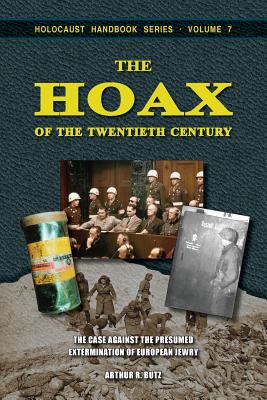
The Hoax of the Twentieth Century: The Case Against the Presumed Extermination of European Jewry
by Arthur Butz (4th Ed. 2015)
A must read if you want a clear picture of the scope and magnitude of the historical cover-up of our age, who is behind it, and what can be done to put an end to it.
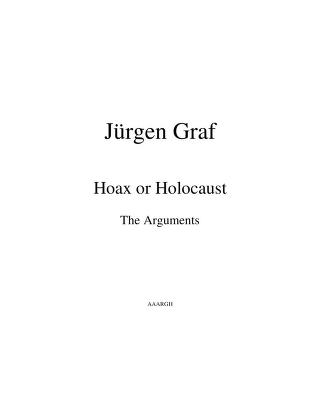
Hoax or Holocaust: The Arguments
by Jürgen Graf (1997)
A comprehensive overview of revisionist beliefs regarding the Holocaust.
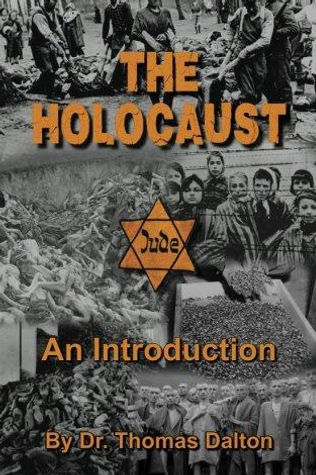
The Holocaust: An Introduction
by Dr. Thomas Dalton (2016)
This short introductory book seeks to examine several aspects of the crime referred to as The Holocaust — these would include the motive, the means by which it was conducted, and the bodies of the victims. It furthermore seeks to consider all ancillary and related evidence that might support, or refute, the traditional story. As the reader will see, all these areas are problematic, from the conventional standpoint.
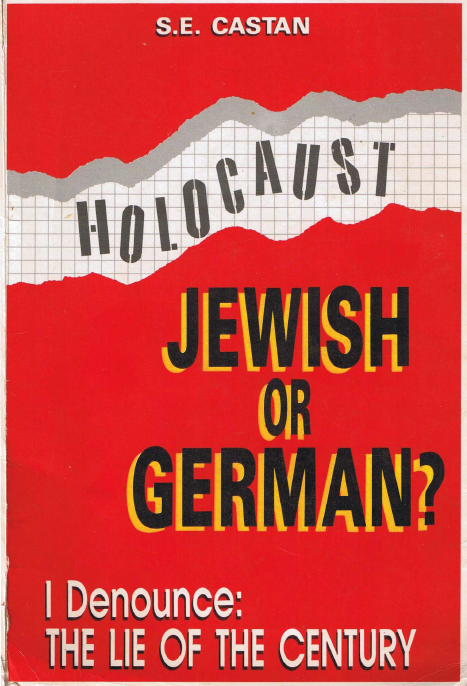
by Siegfried Castan (1988)
Originally published in Portuguese in Brazil, this book gives a fairly good overview of the years surrounding the Second World War from a revisionist perspective, including the alleged Holocaust.
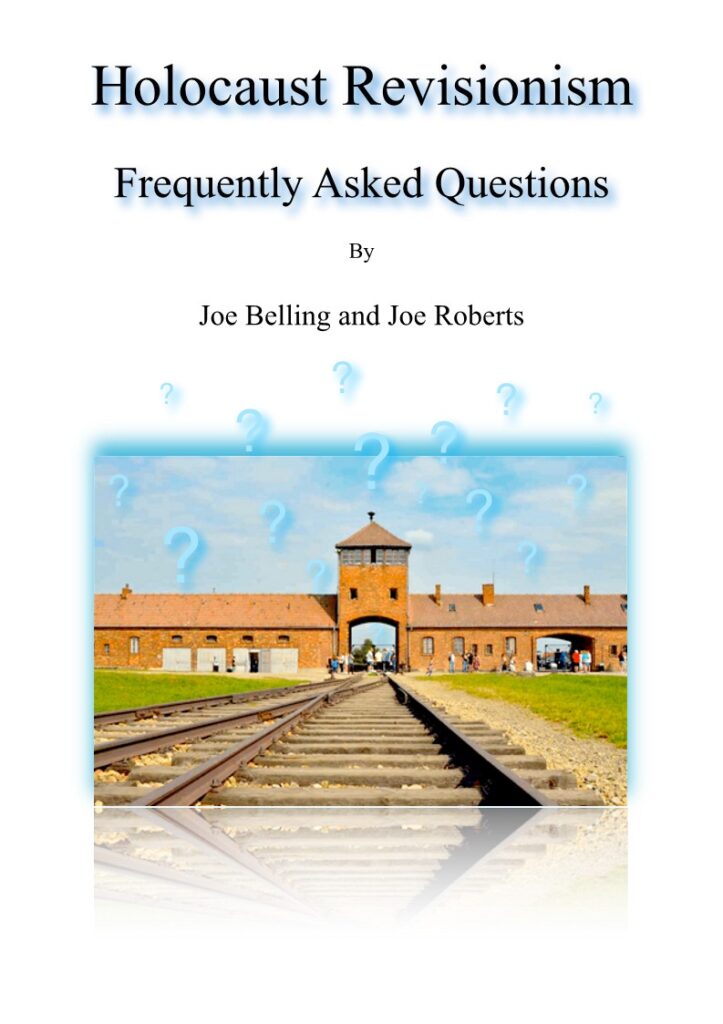
Holocaust Revisionism – Frequently Asked Questions
by Joe Belling and Joe Roberts
“What is revisionism?” “What was Zyklon-B used for?” “Why is the question of the gas chambers important?” This booklet answers these and 102 more questions for those who are looking for a cursory understanding of holocaust revisionism.

Inside the Gas Chambers: The Extermination of Mainstream Holocaust Historiography
by Carlo Mattogno (2nd Ed. 2016)
This book summarizes the arguments for and against every single gas chamber claim made for any of the German war time camps, with specific chapters devoted to the ‘mystical’ gas vans and the euthanasia centers.

Is the Diary of Anne Frank Genuine?
by Robert Faurisson (1982)
Dr. Faurisson opens his treatise with a critical internal analysis of the text of the Diary, followed by the details of an on-site forensic examination of the actual premises where Anne is supposed to have been in hiding. He then proceeds to a number of material discrepancies revealed during his interviews with the principal witness, Anne’s father, Otto Frank, concluding the work with a bibliographic analysis and comparisons between two major texts of the Diary. In reading this booklet you will not only discover the truth about the origins and evolution of this Diary attributed to a young girl, you’ll also gain ·a healthy understanding of the incredible lengths to which people have gone to propagate and profit from this simple literary fraud.

Jewish Emigration from the Third Reich
by Ingrid Weckert (2nd Ed. 2016)
Weckert‘s booklet elucidates the emigration process in law and policy, thereby correcting the traditionally received picture of Jewish emigration from Germany significantly.
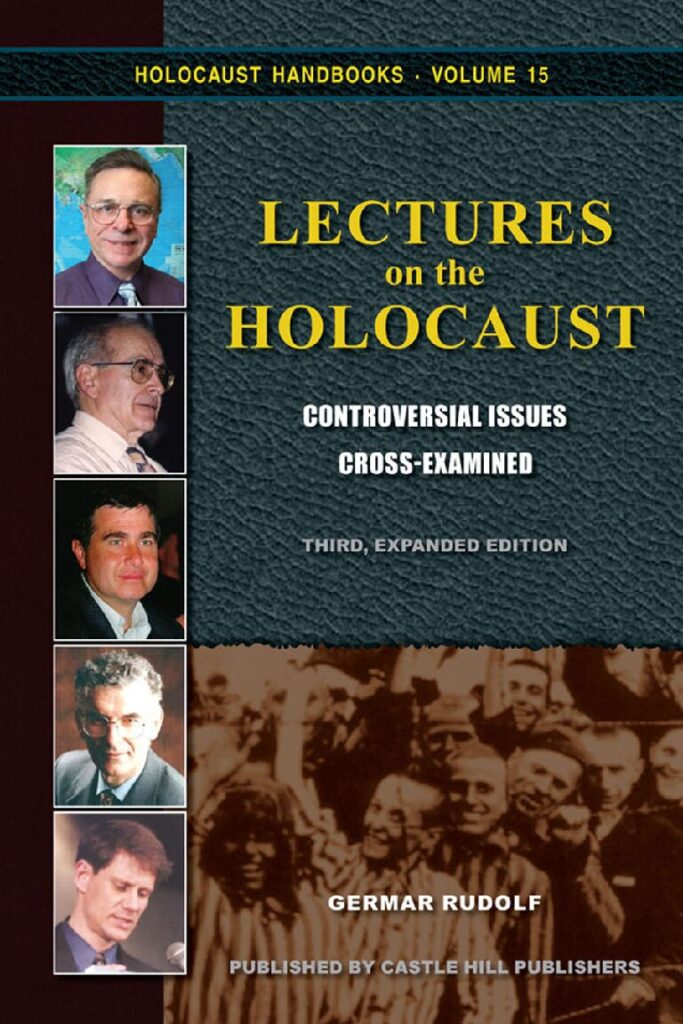
Lectures on the Holocaust: Controversial Issues Cross-Examined
by Germar Rudolf (3rd Ed. 2017)
Gives the most comprehensive and up-to-date overview of the critical research into the Holocaust, and lobbies for free inquiry and a free exchange of ideas about this topic, exactly because the powers that be can’t face critical questions.
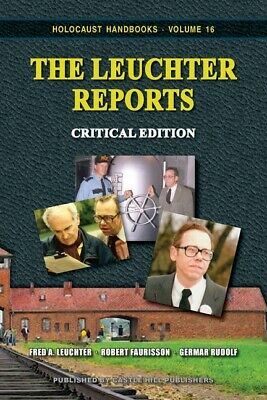
The Leuchter Reports: Critical Edition
by Fred Leuchter, Robert Faurisson, & Germar Rudolf (5th Ed. 2017)
Fred Leuchter’s reports on the ‘gas chambers’ of Auschwitz, Birkenau and Majdanek camps, with critical notes and research updates, backing up those of Leuchter’s claims that are correct, and correcting those that are not.
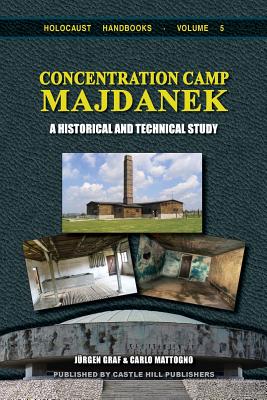
Majdanek: A Historical and Technical Study
by Jürgen Graf & Carlo Mattogno (3rd Ed. 2010)
Based on exhaustive research of the primary sources and a thorough exploration of the physical remainders of the former concentration camp, Mattogno and Graf expertly dissect and repudiate the myth of homicidal gas chambers at Majdanek.
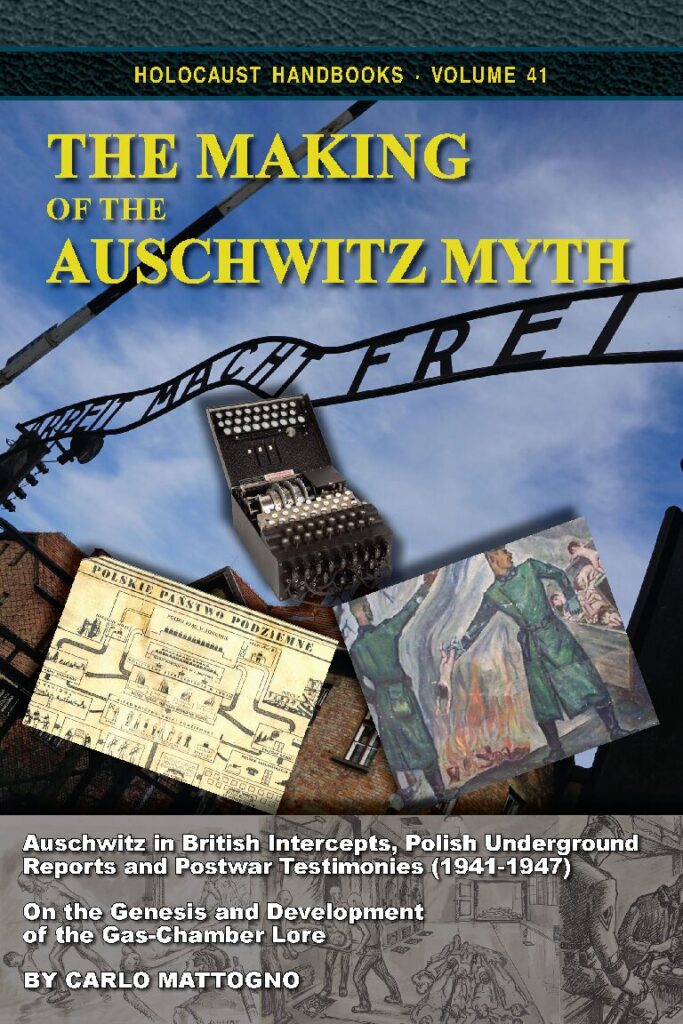
The Making of the Auschwitz Myth: On the Genesis and Development of the Gas-Chamber Lore
by Carlo Mattogno (2nd Ed. 2021)
The orthodox narrative of what transpired at the infamous Auschwitz Camp during the Second World War solidified into its current version in the environs of the Great Auschwitz Trial staged at Frankfurt, Germany, during the mid-1960s. But how exactly did we get there?
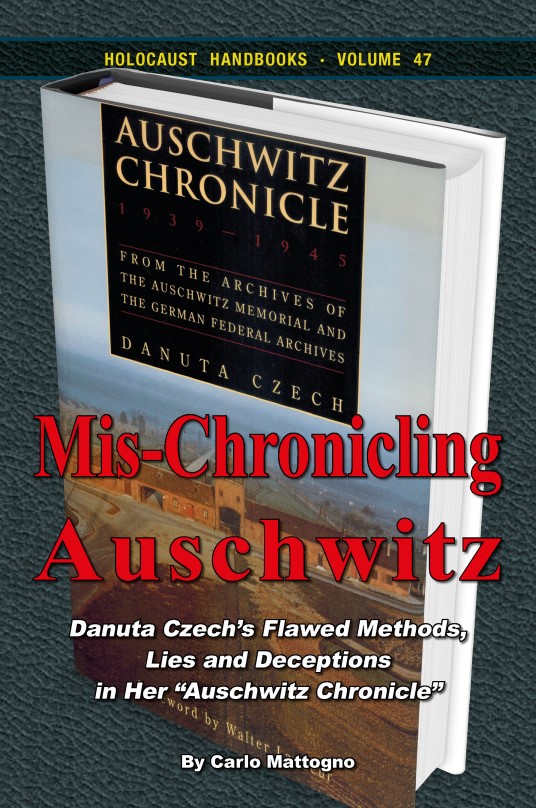
by Carlo Mattogno (2022)
Auschwitz Chronicle, which was published in 1990 and contains a compilation of revised articles written from 1959 to 1964 by Polish Historian Danuta Czech of the Auschwitz Museum, has been for decades a mainstay of officially sanctioned historiography about the Auschwitz Camp. The present work, however, demonstrates in hundreds of instances that the Chronicle is a mere jumble of conjectures, distortions, inventions and omissions, a fable that is the result of an intentionally deceptive and pathologically mendacious method, evidently designed to serve political goals.
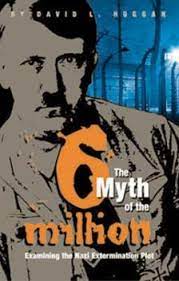
The Myth of the 6 Million: Examining the Nazi Extermination Plot
by David Hoggan (1969)
In the years since its publication, certain pieces of information presented in Hoggan’s book have either been corrected or greatly expanded upon by other revisionist researchers, and despite having its detractors, even in the revisionist movement, it still serves as a competent early contribution to Holocaust Revisionism.
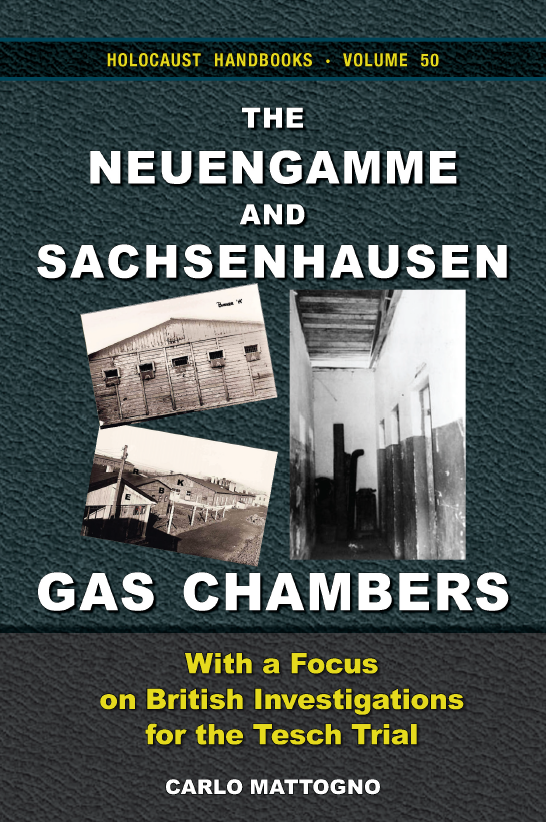
The Neuengamme and Sachsenhausen Gas Chambers
by Carlo Mattogno (2022)
Of primary interest regarding the alleged events at the Neuengamme and Sachsenhausen Concentration Camps are allegations of homicidal gassings in camp buildings converted or misappropriated for this purpose. The evaluation of many interrogation protocols and court testimonies shows that, as the number of statements increases, so do their discrepancies and contradictions.
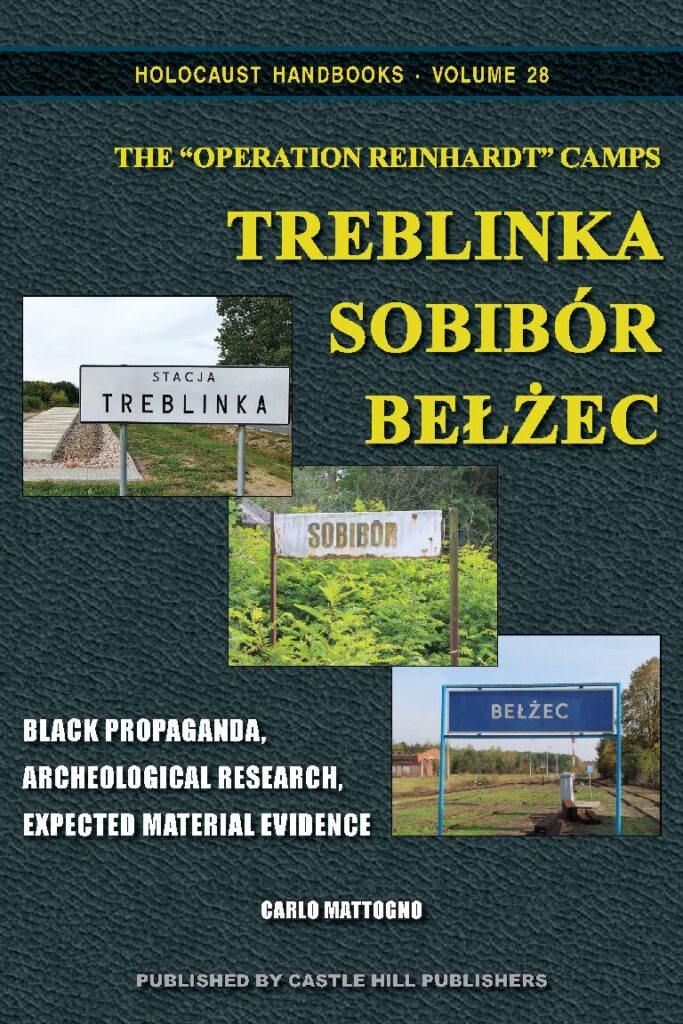
The ‘Operation Reinhardt’ Camps: Treblinka, Sobibor, Belzec
by Carlo Mattogno (2021)
As an update and upgrade to the monographs written about the alleged National-Socialist extermination camps Treblinka, Sobibór and Bełżec, this study contains all the essential information about all three camps and presents as well as scrutinizes much new information.
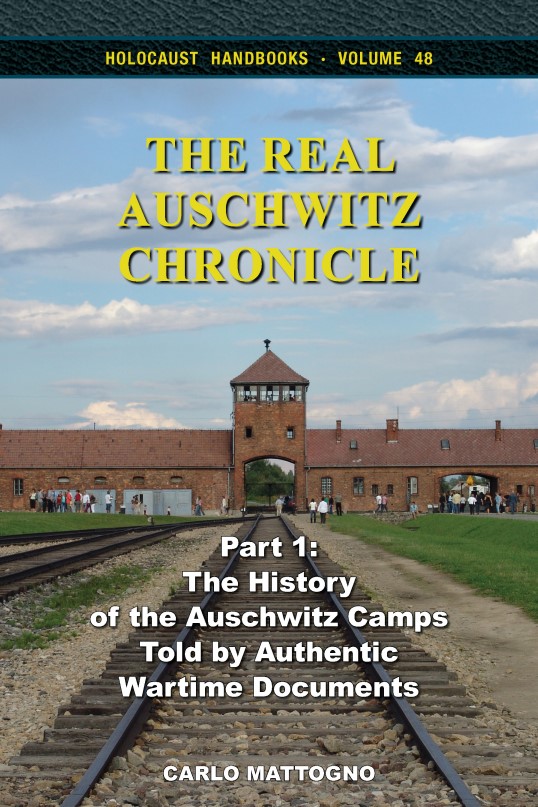
by Carlo Mattogno (2023)
This purpose of this present work is to provide the reader and researcher with a comprehensive historical picture of Auschwitz Camp activities, including a focus on documents concerning the sanitary and medical situation and the planning and construction of the camp, as well as providing a definitive answer to the question: How many prisoners demonstrably died in the Auschwitz camp?
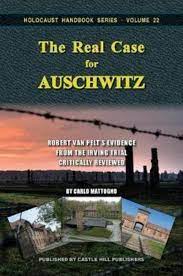
The Real Case for Auschwitz: Evidence from the Irving Trial Critically Reviewed
by Carlo Mattogno (3rd Ed. 2019)
This book delivers a crushing blow to Robert van Pelt’s 2002 book, The Case for Auschwitz, which was based on van Pelt’s own expert report supporting Deborah Lipstadt during the famous libel trial of David Irving in 2000.
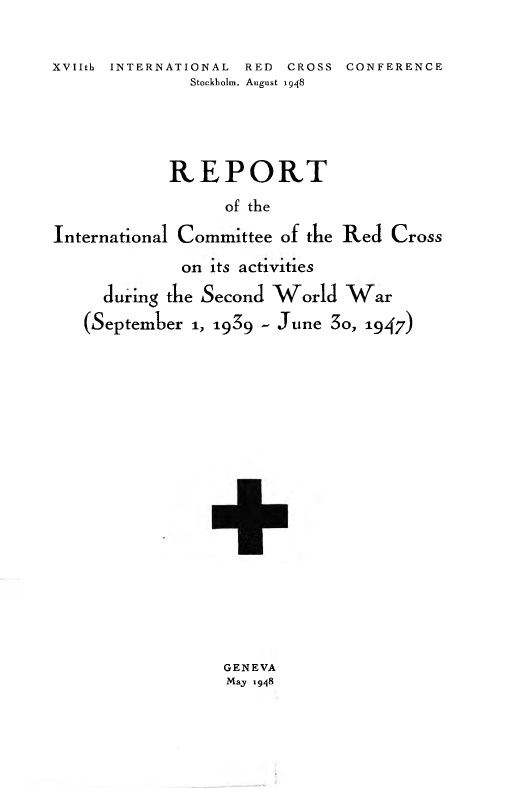
Report of the International Committee of the Red Cross
Part One — Part Two — Part Three
This comprehensive account from an entirely neutral source is a survey of the Jewish question in Europe during World War II and the conditions of Germany’s concentration camps. The suspicions raised about the “Holocaust” by this report center on the stats about the numbers of those who died in German “concentration camps”.
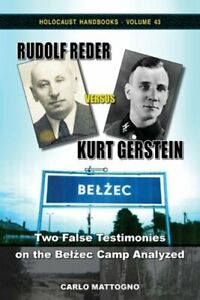
Rudolf Reder versus Kurt Gerstein: Two False Testimonies on the Belzec Camp Analyzed
by Carlo Mattogno (2021)
The present study juxtaposes the testimonies of Reder, a Belzec inmate, and Gerstein, an SS Officer whose testimonies were the main source of Western mainstream historiography for 40 years, and concludes that they are both, for the most part, utterly incommensurate.
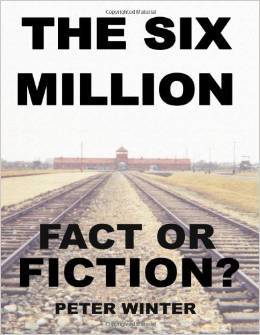
The Six Million: Fact or Fiction?
by Peter Winter (7th Ed. 2018)
A book that questions the ‘Six Million’ story, and concludes that at the very best, it is a poor concoction of lies, and at the worst, an utterly evil conspiracy designed to besmirch the German people.
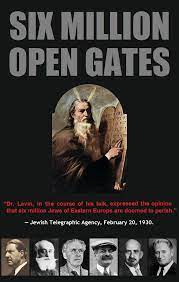
by S.A.R. Lynch (2012)
This book contains scans of a large number of printed examples of the Jewish ‘magic’ cabalistic ‘6 million’ figure appearing in the global press, both Jewish and non-Jewish going back decades preceding the Second World War.
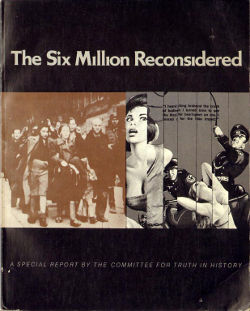
by William Grimstad (1977)
This extremely hard to find book is one of the best exposés of the Nazi Holocaust hoax ever written. Excellent discussions of the Talmudic scriptures, the Khazars, the Holocaust reparations scam, the Jewish involvement in Soviet Communism and other touchy subjects.
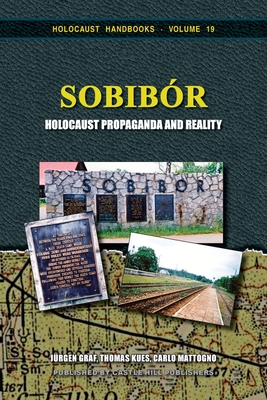
Sobibór: Holocaust Propaganda and Reality
by Jürgen Graf, Thomas Kues, & Carlo Mattogno (2nd Ed. 2020)
In this book, the orthodox version of what transpired at Sobibór is put under the microscope. It is shown that the traditional narrative of the camp’s history is not based on solid evidence, but on the selective use of eyewitness testimonies, which in turn are riddled with contradictions and outright absurdities.
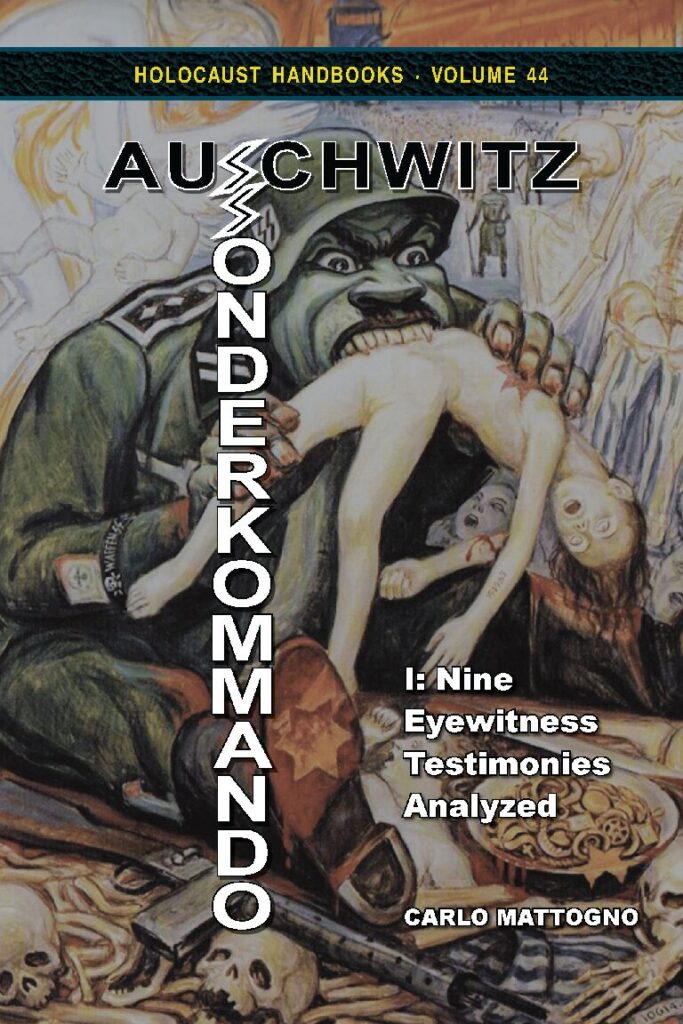
Sonderkommando Auschwitz I: Nine Eyewitness Testimonies Analyzed
by Carlo Mattogno (2021)
This book analyzes the accounts of nine witnesses who claim to have been members of the Auschwitz Sonderkommando, all of whose exaggerated accounts follow a narrative developed after the war by the Soviet propaganda units which occupied Auschwitz after the German retreat.
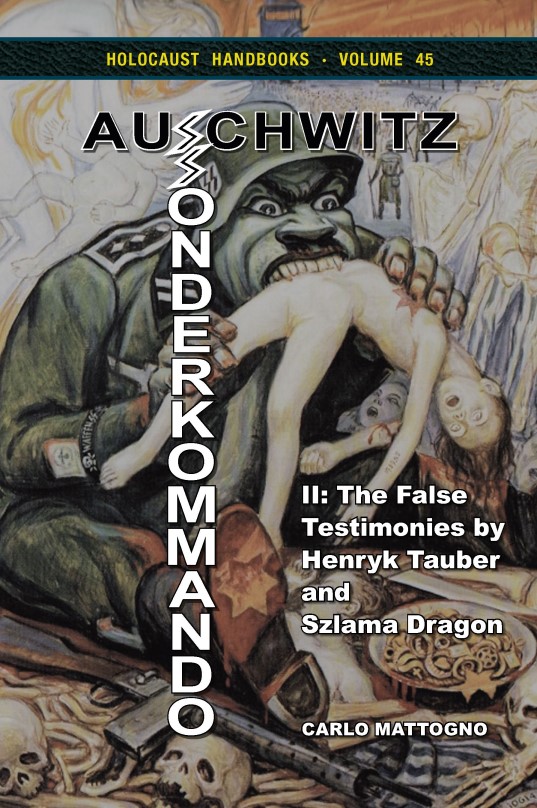
Sonderkommando Auschwitz II: The False Testimonies by Henryk Tauber and Szlama Dragon
by Carlo Mattogno (2022)
Neither Henryk Tauber nor Szlama Dragon is a name that rings a bell among the general populace, or even among most aficionados of World War II history. After the testimonies of many world-famous Holocaust witnesses, such as Rudolf Höss and Miklós Nyiszli, have been thoroughly discredited by revisionist critiques, the orthodoxy has shifted its reliance for their narrative heavily to these two witnesses. It is therefore now pivotal to scrutinize their post-war testimonies with the same critical method that has already led to the downfall of hundreds of false Holocaust witnesses. The present study does exactly that.
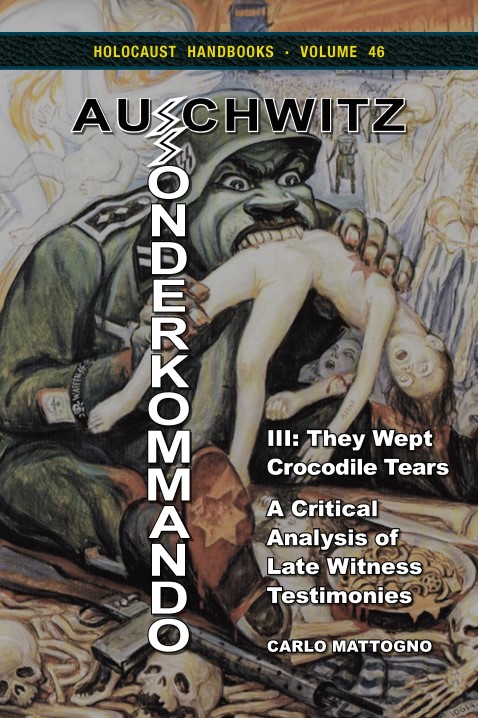
by Carlo Mattogno (2022)
This book critically reviews the statements by the former Auschwitz inmates interviewed by Israeli Historian Gideon Greif, who decided to record and publish the recollections of former Auschwitz inmates who claim to have served in the so-called Sonderkommando. The author shows that all of these testimonies, just like those analyzed in the other two volumes of this trilogy, fly in the face of documented and forensically proven facts, are riddled with internal inconsistencies, and in many aspects contradict other witness statements and the orthodox narrative.
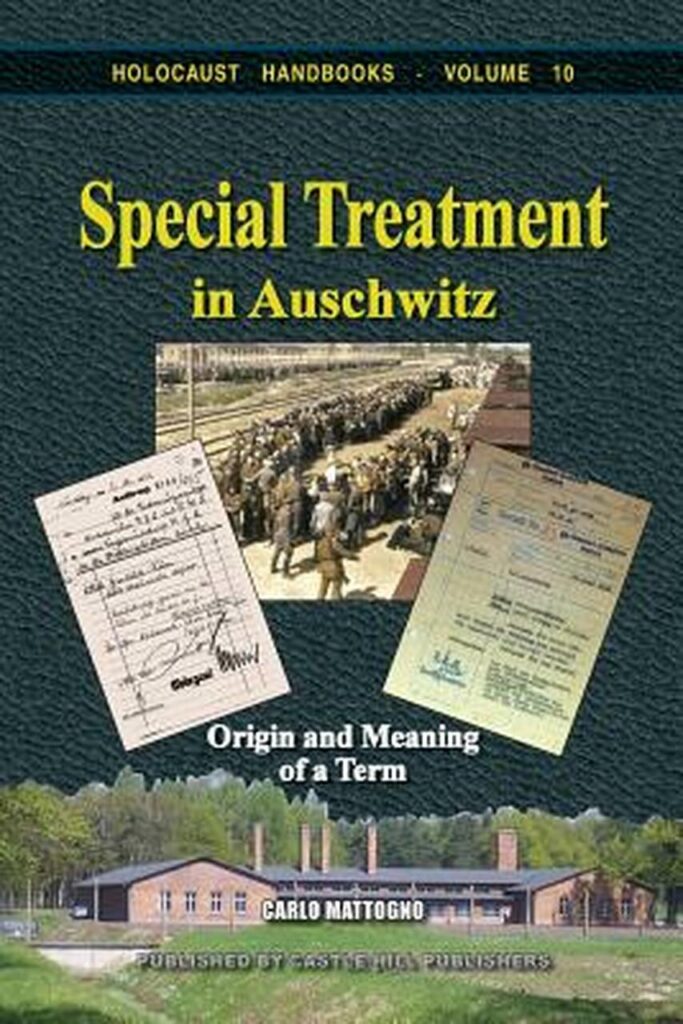
‘Special Treatment’ in Auschwitz: Origin and Meaning of a Term
by Carlo Mattogno (2nd Ed. 2016)
By publishing and interpreting numerous documents about Auschwitz – many of them hitherto unknown – Mattogno is able to show that, while “special” had many different meanings in these documents, not a single one meant “execution.”
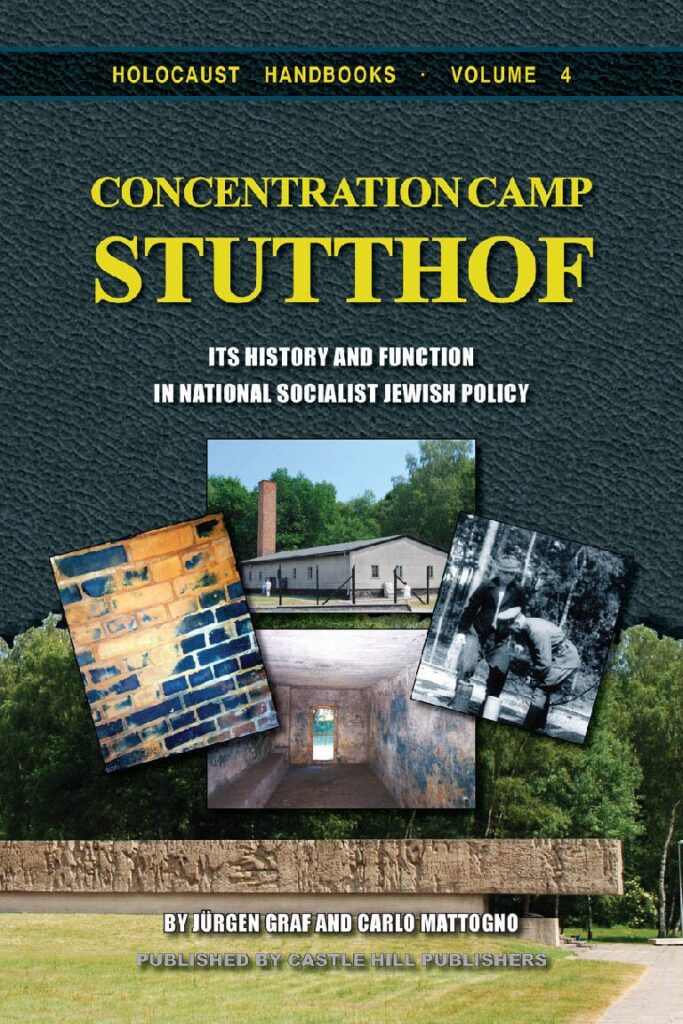
Stuthoff: Its History and Function in National Socialist Jewish Policy
by Jürgen Graf & Carlo Mattogno (4th Ed. 2016)
Not only do Graf and Mattogno prove that Stutthof did not serve as a ‘makeshift’ extermination camp, they also shed light on the question of what happened to some of the prisoners who were sent to Auschwitz but never registered in that camp — they ended up in Stutthof.
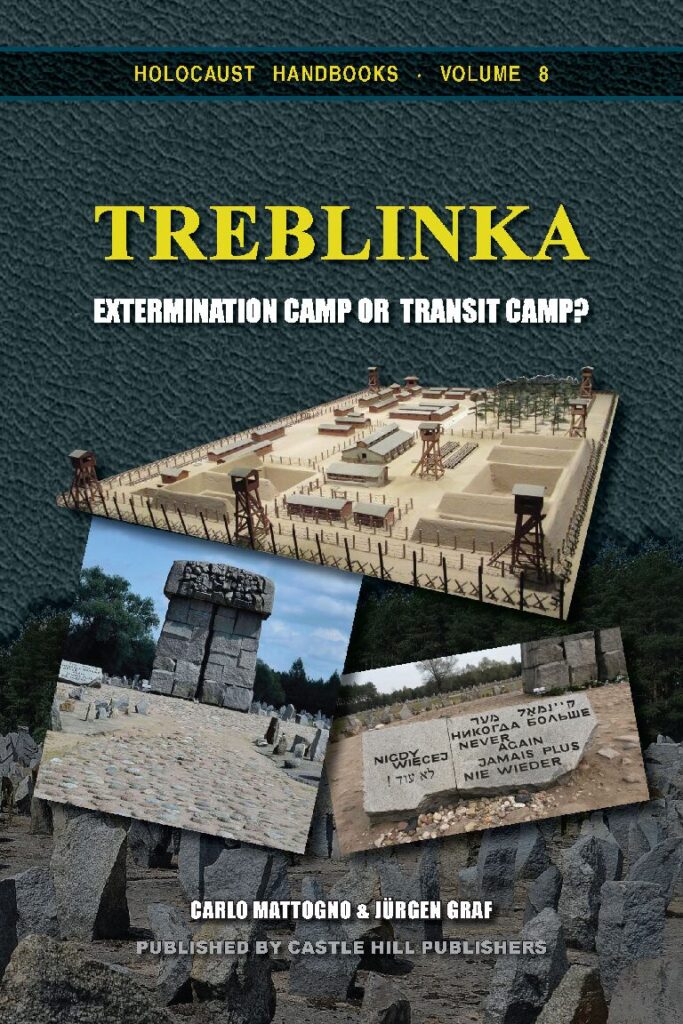
Treblinka: Extermination Camp or Transit Camp?
by Carlo Mattogno and Jürgen Graf (3rd Ed. 2020)
With the help of witness statements, documents, and forensic findings, the authors attempt to determine the real function of the Treblinka camp and expose the absurdities of Holocaust historiography in the process.

Unmasking Anne Frank: Her Famous Diary Exposed as a Literary Fraud
by Ikuo Suzuki (2022)
Millions of people know of Anne’s story, but very few know of the many problems with it. As it turns out, Anne’s tale is rife with absurdities, logical problems, inconsistencies, and incoherent claims. Here, Japanese researcher Ikuo Suzuki deconstructs Anne’s famous dairy, exposing the many issues lying just below the surface. In the process, he unmasks the truth: that the notorious diary was likely written by a middle-aged Jewish man who worked in conjunction with Anne’s father, Otto, to foist upon the public a deceptive and highly misleading story of a young teenaged girl who perished in a German camp.
